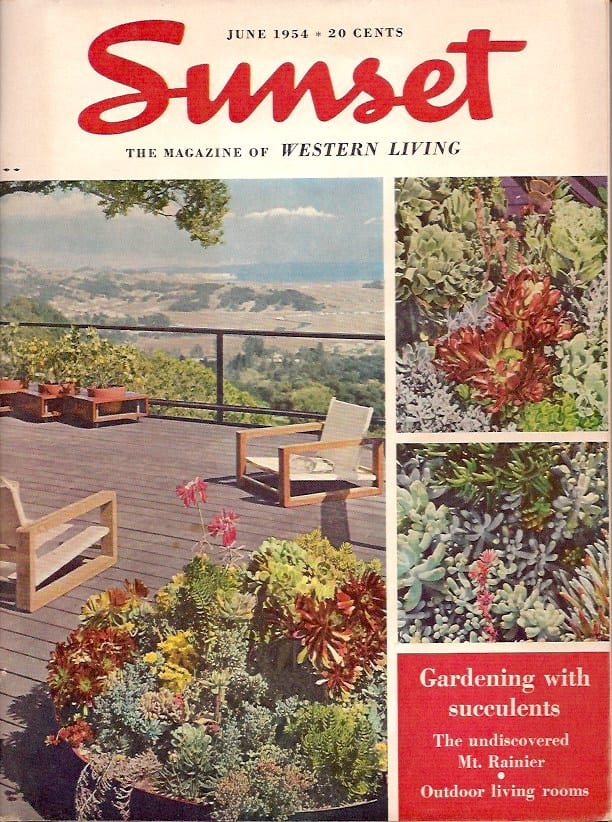
“Once in the ’90s and again in the late ’20s, gardeners have turned to succulents with an intensity amounting to a craze. Now they are coming back into favor again, and this time it looks like something more than a temporary infatuation.” — Sunset magazine, June, 1954.
A half-century ago, each hefty, half-inch-thick issue of Sunset magazine cost 20 cents and offered hours of useful, entertaining reading about gardening, food and travel. My parents subscribed and by 1960, succulents surrounded our Southern CA ranch home. I’ve always assumed it was because cuttings were free for the asking, and my father didn’t want to water the garden more than absolutely necessary.

An ad for Fiberglas awnings, from the magazine
But is it possible that my parents were onto…a trend? Well, no. The six-page cover story is mostly about container gardens for “the outdoor living areas of the Western house: its patios, lanais, decks, and paved areas…And if ever a plant was made for a pot, it’s the succulent.” Containers didn’t appear on my folks’ patio until the ’70s. With geraniums.
The succulent article’s 25 photos are B&W except for those shown on the cover. In 4,000 words, the story gives an overview of succulents and their care, design ideas, and a “beginner’s collection” of about 50 varieties. Most are still fairly common, but Euphorbia valida is now E. meloformis; Gasteria maculata is now G. bicolor; and Cotyledon hemisphaerica is Adromischus hemisphaericus.
Mentioned in the article but nearly unknown today are Echeveria rosea grandis and Sedum amecamecanum. “Do you mean Sedum americanum?” Google asked. Uh, not unless Sunset made one whopping typo. What I learned about this unpronounceable sedum is that it has “fragile leaves”—doubtless why it’s not in demand.
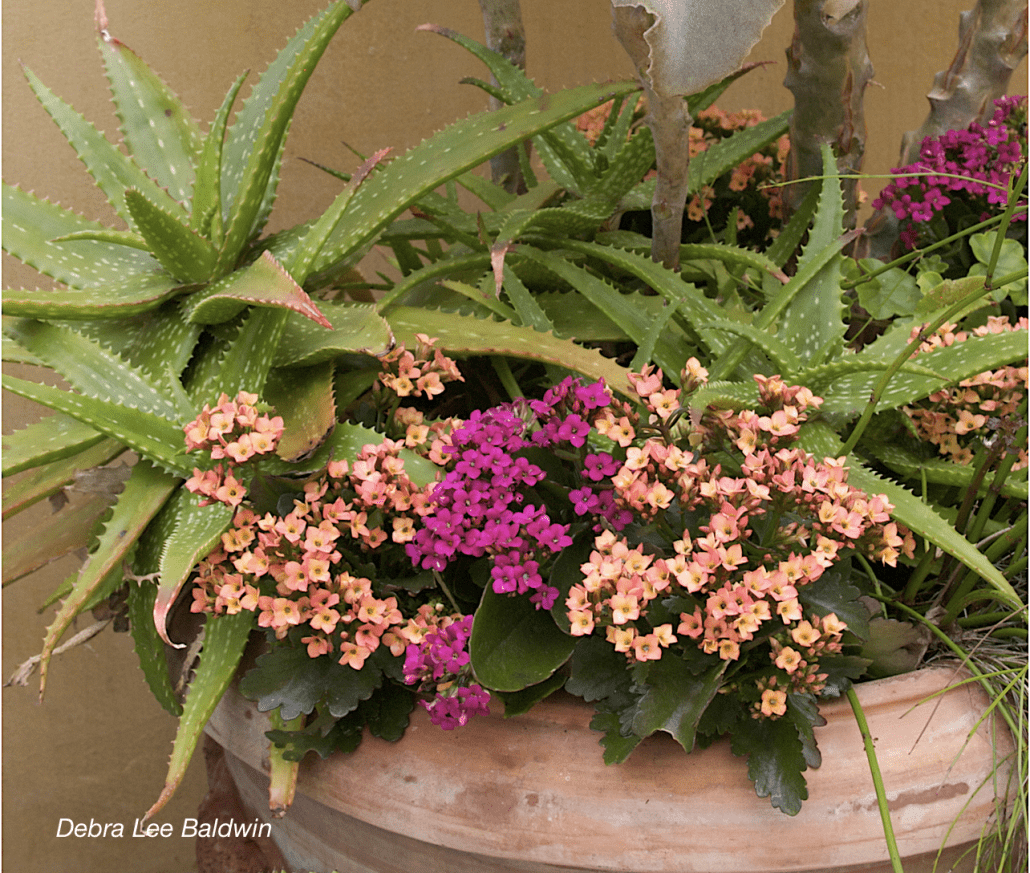
“Kalanchoe flammea” in the article sure looks like Kalanchoe blossfeldiana. Don’t you wish it still had its earlier, more descriptive name?
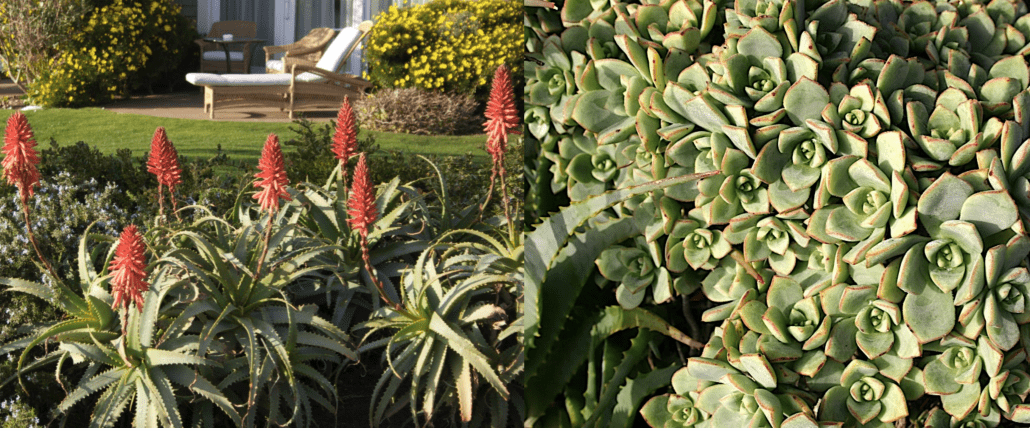
Aloe arborescens (left), Aeonium haworthii (right)
The jade, aeoniums, aloes, ice plants and cacti in my parents’ garden were not necessarily those in the magazine—they grew Aloe arborescens and Aeonium haworthii, for example. Perhaps even back then these were common passalong plants, not sold in nurseries.
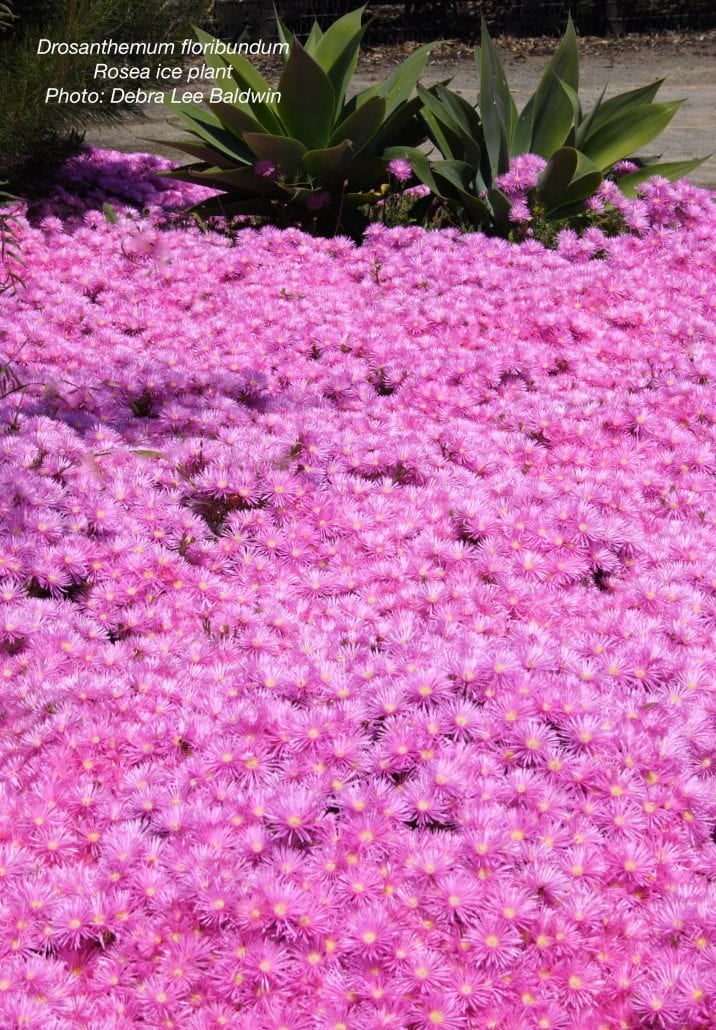
Although it’s shown in the article, perhaps Sunset shouldn’t have bothered. The defining characteristic of Drosanthemum floribundum is lost in black and white.
As a little girl, I was proud to pronounce the name of searing pink ice plant: “mesembryanthemum.” And I would be still, except it’s drosanthemum.
Special thanks to friend, colleague, and retired Sunset Senior Garden Editor Kathy Brenzel for presenting me with the 54-year-old issue. In case you’re wondering, all its content is copyrighted, so apart from short excerpts, I need permission to share it. And I can’t link to it because it’s not online.
Related info on this site:


The post Sunset’s Cover Story on Succulents appeared first on Succulents and Succulent Garden Design | Debra Lee Baldwin.
from Succulents and Succulent Garden Design | Debra Lee Baldwin https://ift.tt/2L8KTBe
via IFTTT

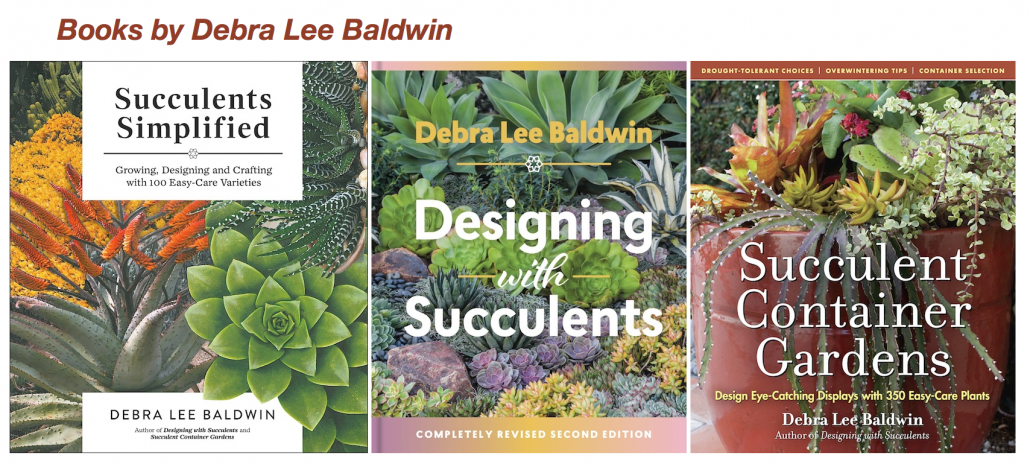
No hay comentarios:
Publicar un comentario